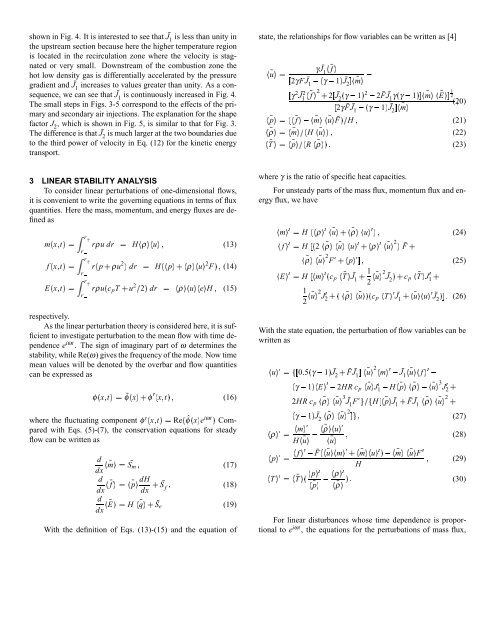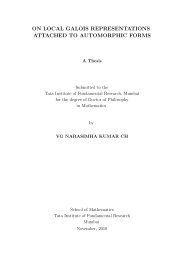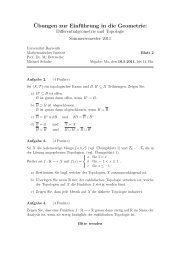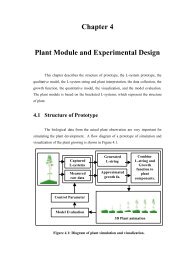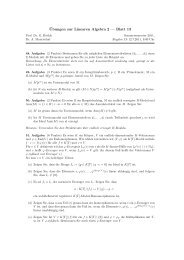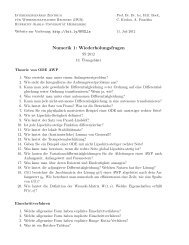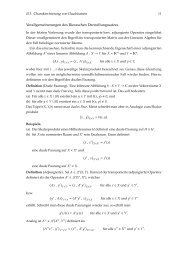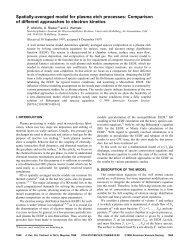integration of cfd and low-order models for combustion ... - IWR
integration of cfd and low-order models for combustion ... - IWR
integration of cfd and low-order models for combustion ... - IWR
You also want an ePaper? Increase the reach of your titles
YUMPU automatically turns print PDFs into web optimized ePapers that Google loves.
©<br />
©<br />
©<br />
¡<br />
©<br />
©<br />
©<br />
©<br />
©<br />
©<br />
©<br />
©<br />
©<br />
©<br />
©<br />
©<br />
©<br />
©<br />
©<br />
<br />
<br />
© ¢<br />
©<br />
©<br />
¢<br />
¢<br />
©<br />
©<br />
©<br />
¢<br />
¢<br />
©<br />
©<br />
©<br />
©<br />
©<br />
©<br />
©<br />
©<br />
<br />
©<br />
©<br />
©<br />
¢<br />
©<br />
©<br />
©<br />
©<br />
©<br />
<br />
©<br />
¢<br />
©<br />
©<br />
©<br />
©<br />
©<br />
<br />
©<br />
©<br />
©<br />
©<br />
©<br />
©<br />
(<br />
©<br />
©<br />
©<br />
©<br />
¢<br />
<br />
¢<br />
©<br />
©<br />
©<br />
©<br />
¡<br />
©<br />
©<br />
©<br />
©<br />
©<br />
©<br />
©<br />
©<br />
©<br />
©<br />
©<br />
©<br />
¦<br />
shown in Fig. 4. It is interested to see that J¯<br />
1<br />
is less than unity in<br />
the upstream section because here the higher temperature region<br />
is located in the recirculation zone where the velocity is stagnated<br />
or very small. Downstream <strong>of</strong> the <strong>combustion</strong> zone the<br />
hot <strong>low</strong> density gas is differentially accelerated by the pressure<br />
gradient <strong>and</strong> J¯<br />
1<br />
increases to values greater than unity. As a consequence,<br />
we can see that J¯<br />
1<br />
is continuously increased in Fig. 4.<br />
The small steps in Figs. 3-5 correspond to the effects <strong>of</strong> the primary<br />
<strong>and</strong> secondary air injections. The explanation <strong>for</strong> the shape<br />
factor J 2<br />
, which is shown in Fig. 5, is similar to that <strong>for</strong> Fig. 3.<br />
The difference is that J¯<br />
2<br />
is much larger at the two boundaries due<br />
to the third power <strong>of</strong> velocity in Eq. (12) <strong>for</strong> the kinetic energy<br />
transport.<br />
state, the relationships <strong>for</strong> f<strong>low</strong> variables can be written as [4]<br />
u¤ ¯<br />
p¤ ¯<br />
ρ¤ ¯<br />
T ¤ ¯<br />
γJ¯<br />
¯<br />
1<br />
f <br />
2γFJ¯<br />
1<br />
1£ γ J ¯ ¯<br />
2<br />
m <br />
γ 2 ¯<br />
J 2 1<br />
¯ f<br />
2 ¡<br />
2<br />
¢<br />
J¯<br />
2<br />
γ 2<br />
1£ 2 ¯F J¯<br />
1<br />
γ γ <br />
¢ <br />
2γ ¯F J¯<br />
1<br />
1£ γ J ¯ ¯<br />
2<br />
m<br />
¯<br />
¯ © m 1£<br />
1<br />
¯ 2 E<br />
(20)<br />
m u ¦ ¯F£¨<br />
£!¦ u m¨<br />
ρ p"¨ £§<br />
¯f ¯ H (21)<br />
¯ H ¯<br />
(22)<br />
¯ R ¯<br />
(23)<br />
3 LINEAR STABILITY ANALYSIS<br />
To consider linear perturbations <strong>of</strong> one-dimensional f<strong>low</strong>s,<br />
it is convenient to write the governing equations in terms <strong>of</strong> flux<br />
quantities. Here the mass, momentum, <strong>and</strong> energy fluxes are defined<br />
as<br />
m ¢ x¦ t£¥¤<br />
f ¢ x¦ t£¤<br />
E ¢ x¦ t£¥¤<br />
r<br />
rρu dr ¤ H © ρ<br />
r<br />
r<br />
r p ρu 2 dr ¤ H ¢© ¡ ©<br />
p ρ<br />
£ ¡ ¢<br />
r<br />
r<br />
rρu c p T u 2¨ 2£ dr ¤<br />
¡ ¢<br />
r<br />
u¦ (13)<br />
ρ<br />
u<br />
u 2 F£¦ (14)<br />
e H ¦ (15)<br />
respectively.<br />
As the linear perturbation theory is considered here, it is sufficient<br />
to investigate perturbation to the mean f<strong>low</strong> with time dependence<br />
e iωt . The sign <strong>of</strong> imaginary part <strong>of</strong> ω determines the<br />
stability, while Re(ω) gives the frequency <strong>of</strong> the mode. Now time<br />
mean values will be denoted by the overbar <strong>and</strong> f<strong>low</strong> quantities<br />
can be expressed as<br />
φ ¢ x¦ t£¤ ¯φ ¢ x£<br />
φ ¢ x¦ t£¦ (16)<br />
where the fluctuating component x¦ t£¤ φ Re ˆφ ¢ x£ e iωt £ Compared<br />
with Eqs. (5)-(7), the conservation equations <strong>for</strong> steady<br />
f<strong>low</strong> can be written as<br />
¢ ¢<br />
d<br />
dx ¯ m¥¤<br />
d<br />
dx ¯ ¤ f<br />
d<br />
dx ¯<br />
¯ S m ¦ (17)<br />
p ¯<br />
dH<br />
dx<br />
E¥¤ H ¯ © q ©<br />
¯ ¡<br />
S f<br />
(18)<br />
¦<br />
¯ ¡<br />
S e (19)<br />
§<br />
With the definition <strong>of</strong> Eqs. (13)-(15) <strong>and</strong> the equation <strong>of</strong><br />
where γ is the ratio <strong>of</strong> specific heat capacities.<br />
For unsteady parts <strong>of</strong> the mass flux, momentum flux <strong>and</strong> energy<br />
flux, we have<br />
¢<br />
¤ f H <br />
ρ ¯<br />
2 ¯ ρ ©<br />
¤ ¢ © ρ m u H ¯<br />
© ©<br />
H E m ¤ <br />
1<br />
2 ¯ ¡ 2 ¢<br />
u J2<br />
¯ © ¡<br />
ρ<br />
u u ¯<br />
£¦ u<br />
¡ ©<br />
ρ £ ¡ u<br />
(24)<br />
¯<br />
¯F<br />
u ¯<br />
2 ¡ © F #¦ (25)<br />
p<br />
c p<br />
T ¯ J¯<br />
¡ 1<br />
1<br />
2 ¯ u<br />
ρ ¯<br />
u £ ¯<br />
2 J¯<br />
2<br />
£<br />
©<br />
c p T<br />
J¯<br />
¡<br />
1<br />
c p<br />
T¯<br />
¡<br />
J 1<br />
u ¯<br />
u<br />
¯ J 2<br />
£$§ (26)<br />
With the state equation, the perturbation <strong>of</strong> f<strong>low</strong> variables can be<br />
written as<br />
u<br />
ρ ¤<br />
0§ 5 γ 1£ ¯ ¡<br />
J 2 ¢ <br />
¤&%<br />
1£ γ<br />
2HR c p<br />
γ 1£ ¯ J 2<br />
m<br />
H ¯ u<br />
¤ p<br />
¤ T ¯<br />
¢<br />
T ©<br />
©<br />
u m u<br />
E u p ρ' u ©<br />
¯F J¯<br />
¯<br />
2<br />
1<br />
J¯<br />
¯<br />
1<br />
f<br />
2HR c p<br />
¯ J 1 H ¯ ¯ ¯<br />
ρ ¯<br />
ρ ¯<br />
ρ ¯<br />
f ¯F ¯ u<br />
¢<br />
p<br />
p ¯<br />
u ¯<br />
u<br />
u ¯<br />
u ¯<br />
m<br />
3 ¯<br />
J 1<br />
¨*% F H ¯ p ¯ ¡<br />
J 1 )( <br />
2<br />
<br />
¯F ¯ J 1<br />
ρ ¯<br />
3<br />
J2<br />
¡<br />
u ¯<br />
¦ (27)<br />
¦ (28)<br />
¯ © ¡ ©<br />
u £' m<br />
H<br />
m ¯<br />
u ¯ F<br />
2 ¡<br />
¦ (29)<br />
ρ<br />
£§<br />
¯ ρ<br />
(30)<br />
For linear disturbances whose time dependence is proportional<br />
to e iωt , the equations <strong>for</strong> the perturbations <strong>of</strong> mass flux,


